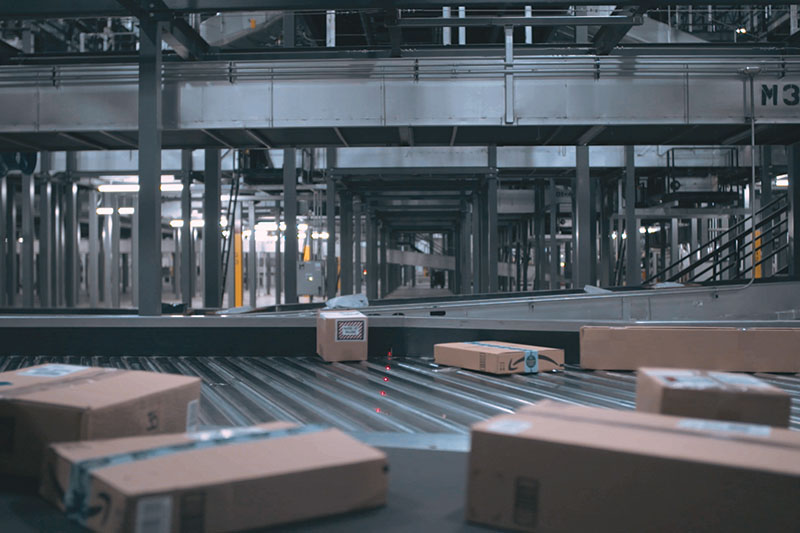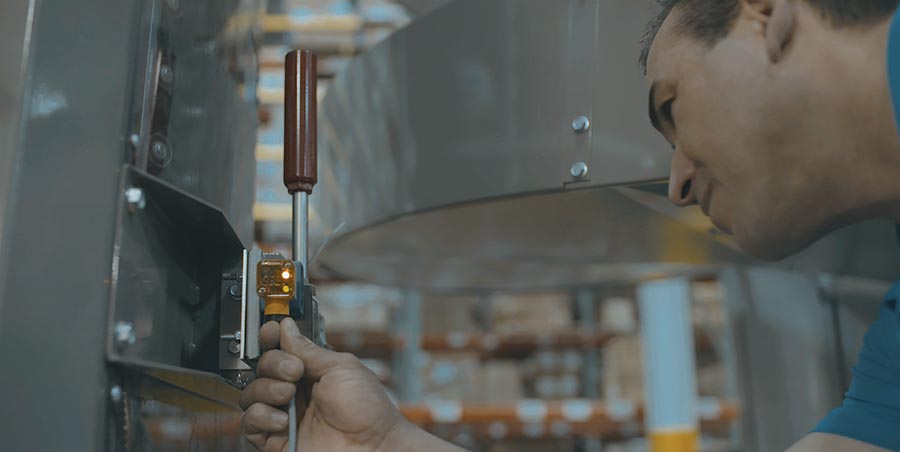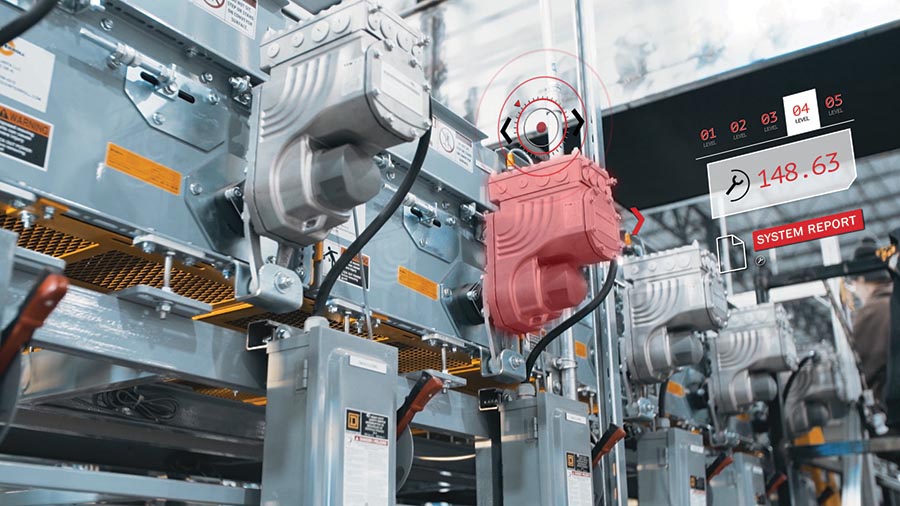Conventional warehouses: Simple, yet effective
As the industry continues unprecedented transformation, some of the classic approaches still hold up—especially when empowered with detailed data.

Although Modern often writes about the best in automation, the fact is that far more distribution centers operate conventional warehouses, characterized by lift trucks for pallet movement; floor, rack and shelf storage; manual picking; and minimal automation. Yet efficiency, productivity, throughput and accuracy are still paramount.
We spoke with some industry experts to assess the best practices from the best operators of conventional warehouses, as well as the opportunities to introduce automation that can make a difference.
Measure, manage, maximize
Whether for new facilities or retrofits, several considerations can ensure a facility will be optimized now and in the future. Norm Saenz, managing director at St. Onge Co., says modeling the inventory profile is the key to selecting the right storage equipment types. Most warehouses require three or more different rack bay elevations, he says, because single-elevation setups typically don’t efficiently support all items in a warehouse.
For example, items with 20+ pallets per SKU require more dense storage equipment types to get the most out of the warehouse space. However, if you are consistently receiving partial pallets, Saenz says an elevation with partial pallet location heights makes sense. Regarding floor storage, if you have items that can stack three to five levels on the floor, storage density will improve without the need for a capital investment in rack.
“There are many ways to squeeze more capacity out of your existing warehouse,” Saenz says. “Drafting the layout will show the amount of ‘white space’ in the warehouse for aisles and flue spaces. Balancing the labor efficiency of tunnels or cross aisles versus denser rack designs is also an important analysis.”
Then, there’s the software angle. Saenz says many warehouses are still operating with a legacy warehouse management system (WMS), including paper-based systems. The practical assessment is to identify your operation’s ideal functionality, as it compares to best-of-breed WMS options. Converting these limitations into estimated labor savings and accuracy benefits are the next steps, Saenz says. Build the case for a new WMS or enhancements to your legacy systems. “The chances are good that a legacy system is not optimizing the labor productivity of the warehouse, including task interleaving, directed put-away, labor management, product slotting, etc.,” Saenz adds.
According to Justin Ritter, director of project engineering for Lucas Systems, warehouses and distribution centers are constantly evaluating technology. Instead of automation, many are deploying a warehouse execution layer that adds flexibility to manual processes without a large up-front capital investment.
A full-blown warehouse execution system (WES) is normally associated with automated systems, where the WES sits between the WMS, automated systems and people to orchestrate the activities in that facility. What Ritter describes is a layer of execution software that sits between the WMS and the people performing conventional activities. This is valuable to those using a basic, traditional WMS, which isn’t always good at things like creating the most efficient pick path to minimize walking.
If pickers aren’t system-directed, or rely on an entry-level system, they’re not likely to be as efficient or accurate as they could be. One way to address that is with voice software, and the latest generation of voice can serve as a WMS for companies that don’t have one, or improve the capabilities of a WMS with limited functionality. In this instance, the voice software acts like a WES, sitting between the system of record and the lift truck operator or order selector to direct activities. More importantly, like a WES in a highly automated facility, the solution has optimization functionality to ensure the associate is following an optimal pick path or is picking items in the best sequence for packing or other important criteria like ensuring fragile items don’t end up under heavy ones.

Collecting item-level data can inform decision making and enable real-time optimization.
An execution layer enables these process changes independent of the mode of picking, Ritter says. So, manual warehouses can move from single-order to multi-order or batches, for example, or scale up without a big capital expense. The execution layer offers process flexibility and optimization that can supplement and enhance the functionality of a WMS.
Ritter outlines the challenges for those using an enterprise resource planning (ERP) system that provides a rudimentary WMS, or a homegrown or legacy WMS. They are evaluating what next step they can take to lower operating expenses, like moving away from paper-based picking, adding automation or upgrading their warehouse management systems.
Picking the Low Hanging Fruit
Norm Saenz, managing director at St. Onge Co., identifies some common opportunities for equipment utilization and process improvement.
- Material Flow – pick paths, zone slotting (ABC, etc.)
- Methods – batch picking
- Forward pick area – right-sizing days of supply (balancing pick and replenish)
- Equipment tweaks – adding beams on lower levels for more pick positions
- Mezzanines – one way to gain more space
- Training – normal and exceptions
- Facilities – lighting, conditioning,signage, rack labeling
Other ways to get more storage capacity out of an existing warehouse:
“Often times that kind of core system change is scary and capital-intensive, even with all the planning. And, there is a risk of failure with any large system upgrade, so many people look for a front-end execution layer to make processes more efficient and productive,” Ritter says. “This provides them the capabilities to extend the life of a WMS or ERP to defer a larger investment for six to 10 years.”
There are other benefits, too. In a conventional warehouse using paper or RF, the WMS is typically only collecting high-level data about the process. The amount of data is not very large, Ritter says. An execution system, on the other hand, collects detailed information about what’s happening in the warehouse and can leverage machine learning and other data tools to improve operations.
“Forget the one-off spreadsheet analyzing volumes quarterly, only to be blown away by seasonal changes,” he says. “The marketplace is evolving, and warehouses are looking for tools that do sophisticated data analysis to give real-time recommendations for inventory or labor planning.”
Too big, too small or just right
Even without automated systems, conventional warehousing processes can benefit from analytics, which have huge potential to improve operations in the conventional warehouse, according to Saenz. One example is replenishment but, unfortunately, too many have not collected the basic information to make the best use of such software.
“There are still so many that don’t have item-level dimensions and weight,” Saenz says. “You have to know product size to replenish effectively. I’ve always been surprised by the lack of that data. It’s not hard, but it sounds overwhelming when you have 30,000 SKUs and know you don’t have dimensions. You know you want and need that info, so you just have to start doing it.”
Saenz recommends adding a gate at inbound to collect dimensional data. It will slow the process a little, he admits, but an item master database can make a big difference. Even simply breaking products into small, medium and large categories will help.

Planning and forecasting are essential to identifying the current state of operations and transforming them to meet future challenges.
Ed Romaine, vice president of marketing and business development for Conveyco, agrees. “You want to know weight and sizes of every piece of inventory, and for some operations this is more realistic than others,” he says. “But it helps with storage density, pick density, shipping—I can’t think of a single part of the operation that doesn’t benefit from that information.”
Taking it a step further, Romaine encourages customers to collect more data than they currently need. “Get as many data points as possible. They might not be important today but later on they will be,” he says. “Build the business case of what you are and what you want to be. You can then extend your forecasting and plan ahead.”
By overlaying operational metrics and forecasting, it’s possible to simulate different capacities and scenarios to see where processes might break down. What happens if a competitor is thrown in our laps? What if business doubles overnight? Maybe you run a great 10,000-order-per-day facility, but what if the next day one manufacturer has not 100 SKUs but 1,000? How will you account for that?
It starts with basic inventory metrics, then labor, throughput, picks, walk time and even ergonomics, Romaine says. Everyone is a little different, but anyone can easily put together a few criteria to watch. A strong continuous improvement group can then delve in and collect even more data.
In responding to a facility’s structural limitations, some operators of conventional warehousing are considering automated travel, such as autonomous mobile robots (AMRs) and automatic guided vehicles (AGVs), which Saenz say are being discussed more and more in traditional warehouse planning.
Rush Fullerton, senior vice president, business development at MHS, predicts that AMRs and AGVs will soon be a staple in even the most conventional warehouse. “It’s difficult to find a warehouse going up that is not full of automation,” he says. “The old-style conventional warehouse has gone by the wayside.” One factor driving this trend is the industry’s movement away from massive facilities to smaller ones in strategic locations.
“For one, they can’t find the labor to fill large mega-hubs, and by the time they build it out, there’s so much money tied up in land and infrastructure that the payback isn’t really there,” Fullerton says. “The biggest issue is lack of labor, which is leading to expansion and automation of new facilities, and in many cases automating old facilities.”
Companies mentioned in this article
Conveyco
Lucas Systems
MHS Global
St. Onge Co.

Article Topics
Latest in Logistics
LM Podcast Series: Assessing the freight transportation and logistics markets with Tom Nightingale, AFS Logistics Investor expectations continue to influence supply chain decision-making The Next Big Steps in Supply Chain Digitalization Under-21 driver pilot program a bust with fleets as FMCSA seeks changes Diesel back over $4 a gallon; Mideast tensions, other worries cited Four U.S. railroads file challenges against FRA’s two-person crew mandate, says report XPO opens up three new services acquired through auction of Yellow’s properties and assets More LogisticsAbout the Author
Subscribe to Logistics Management Magazine

Find out what the world's most innovative companies are doing to improve productivity in their plants and distribution centers.
Start your FREE subscription today.
April 2023 Logistics Management

Latest Resources














